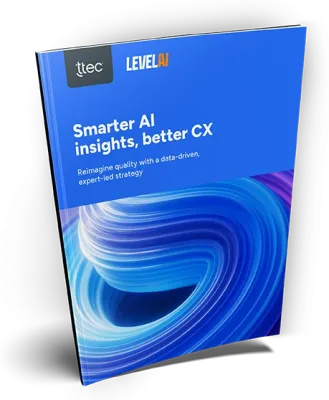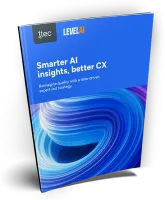The sales world is forever altered, thanks to pandemic-fueled digital transformation across entire enterprises. In the B2B space, where relationships reign supreme, sales organizations found effective and efficient ways to conduct business with a digital-first approach that’s efficient, effective, and won’t go away any time soon.
In-person meetings have nearly disappeared, replaced by Zoom meetings, webinars, virtual trade shows, online wine tastings, and cooking demonstrations. Many sellers found success in these digital introduction, education, and nurture activities, thanks to the relaxed nature of connecting with people in their homes in an informal, authentic environment.
In its research, “The Forrester Tech Tide™: Sales Technologies, Q1 2021,” Forrester finds that digital “front doors” are now the primary way that sales prospects connect with brands—80% of B2B sales will take place in remote and digital settings, elevating the roles of data insight, digital content, and inside sales in the sales process.
The convergence of digital channels, buyer control, and deeper relationships means the old way of making sales won’t cut it anymore. Sales teams still relying on “old school” strategies and tactics will only go so far.
B2B sellers understand they need to change yet face challenges to creating successful digital-first sales experiences. As we emerge into a post-COVID sales environment, the buyer’s table adds more seats, decision-making takes longer, and sellers find it hard to stand out in a virtual environment. Today’s sellers need deeper, faster, more personalized data and insight, as well as the right tools to foster engagement and relationship building. They need to show their value to the buyer more quickly and digitally in order to build strong human connections. It’s a tough balance.
6 sales technologies to support digital-first sales
To succeed in today’s sales world, new technologies are needed. In the same Tech Tide report, Forrester recommends six technologies where sales organizations should invest to keep up with the changing sales landscape.
1. Conversational intelligence
According to Forrester, conversational intelligence tools, like speech & text analytics and other voice-of-customer technology, “use natural language processing to capture unstructured data from remote spoken conversations between sellers and buyers. Embedded AI analyzes the data and surfaces insights to support executive-level decision making, inform management coaching, and inspire reps to adopt best practices.”
There is tremendous insight to be gleaned from unstructured data. Keywords and trends, customer sentiment, and process analysis can help improve sales engagements and improve future interactions on the phone or through digital channels.
2. Customer success
Customer success (CS) solutions are used by brands to monitor the health of their customer relationships by keeping track of customer satisfaction and churn across their products and services. Forrester calls this a “high-potential category that is evolving quickly.” If used correctly, CS solutions enable proactive engagement with customers to ensure they realize the full value of their purchases and derive value from the brand.
As the space evolves, automation, AI, and advanced analytics tools are helping companies drive better engagement, higher revenues, and lower defection from their customer success activities.
3. Revenue intelligence
Revenue intelligence is a dynamic, developing category, using technology to “capture engagement activity between buyers and sellers and automatically upload that data to CRM systems,” Forrester writes. As automatic data capture and CRM uploads of buyer and seller activity data become commonplace, AI-generated insights from a range of revenue cycle activities offer significant potential to influence decision making. The AI engine analyzes data to deliver insights; provides dynamic guidance; and supplies inputs on deal management, forecasting, and other revenue generating activities, Forrester notes.
4. Sales engagement
According to Forrester, sales engagement (SE) platforms “help sales, marketing, and post-sales personnel manage their omnichannel touchpoints at all stages of the buy cycle.” Leaning on automation and orchestration of simple, repetitive tasks, SE platforms deliver efficiency and effectiveness gains. Embedded AI can help users understand preferred engagement channels and surface missing contacts.
5. Sales training and services
To win, you must train; that’s where sales training and services come in. Providers in this space help businesses increase sellers' effectiveness and align sales execution to strategic business goals. With them, sales enablement leaders improve sellers' skills, increase cross-functional collaboration, and embrace modern selling methods.
6. User-generated video
User-generated video allows sellers and other users to create, edit, and share dynamic and personalized video content over email or within social channels. They are prevalent in the B2C world, but with so much B2B buying and selling happening remotely now, Forrester predicts asynchronous video messages “will be an essential arrow in the seller's quiver in 2021 and beyond.” There is also great potential for user-generated videos among sales teams and other internal groups.
Success story: Sales incubator boosts revenue and wins back customers
A leading bulk oil, fuel, and lubricants distributor wanted to enhance, expand, and evolve its inside sales approach while improving efficiencies and leveraging more insight. TTEC’s sales incubator program included growth services expertise, robust digital products, and experienced at-home inside sales experts. We deployed salesforce's CRM platform for more visibility into the entire sales funnel. Now, it was clearer at which stage each account was, how many "touches" each account had received, and other reporting insights. This empowered the sales team to make more informed decisions from an account level as well as optimize their go-to-market strategy in a virtual setting.
Utilizing TTEC’s Inside Sales Playbook (a database of more than 400 different inside sales best practices) our sales experts conducted lead generation activities to prospect, cold-call, and qualify leads. We shared numerous industry best practices and sales exercises such as Win Back Wednesday to motivate and engage the sales teams. On one Wednesday of every month, we focused on winning back customers that no longer had an active status.
As a result, the company achieved a 12% increase in revenue in 3 months, reactivated 33 accounts in five weeks, and generated >$20k in win-back account revenue.
Move the ROI needle with human experts
While technology has its merits, it will not solve sales challenges on its own. Behind every great technology are people to realize the potential that’s specific to the needs of the business. Human experts can leverage the power of these technologies to achieve maximum ROI and deliver amazing experiences along the way. Some ways that humans can help make the most of sales technology include:
- Focusing on a consistent customer experience and measuring longevity
- Evaluating current tools and optimizing usage
- Testing and measuring digital tools
- Working with partners who can lend a helping hand
After all, a truly good sale is about relationships, not products. While that adage still holds true, cultivating and developing strong sales relationships now begin with digital. Where you go from there is up to you.















